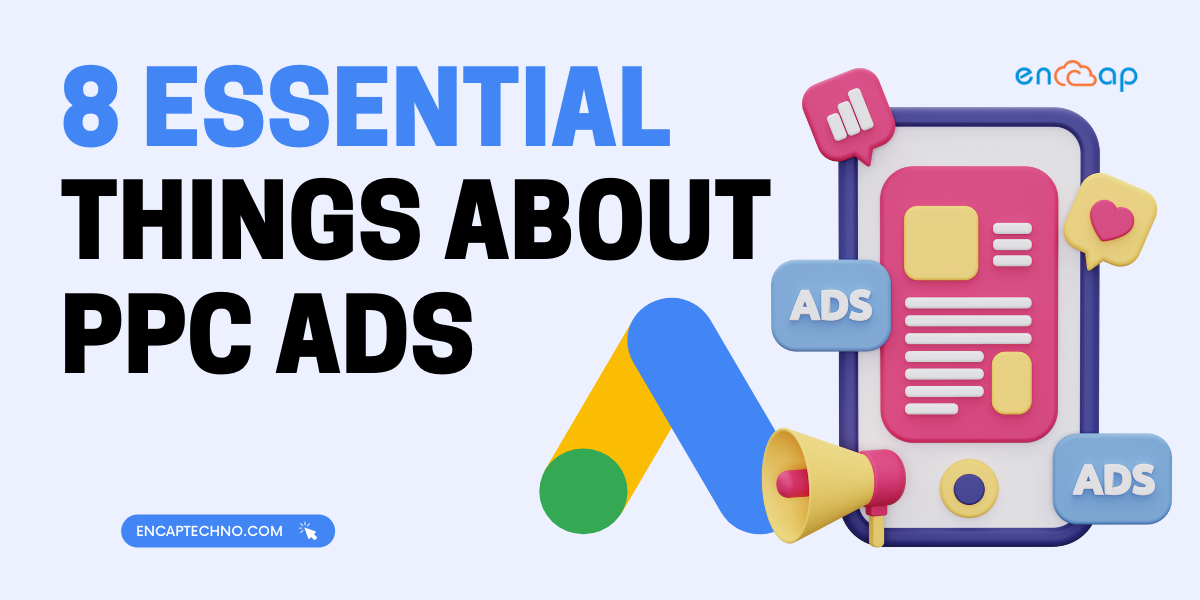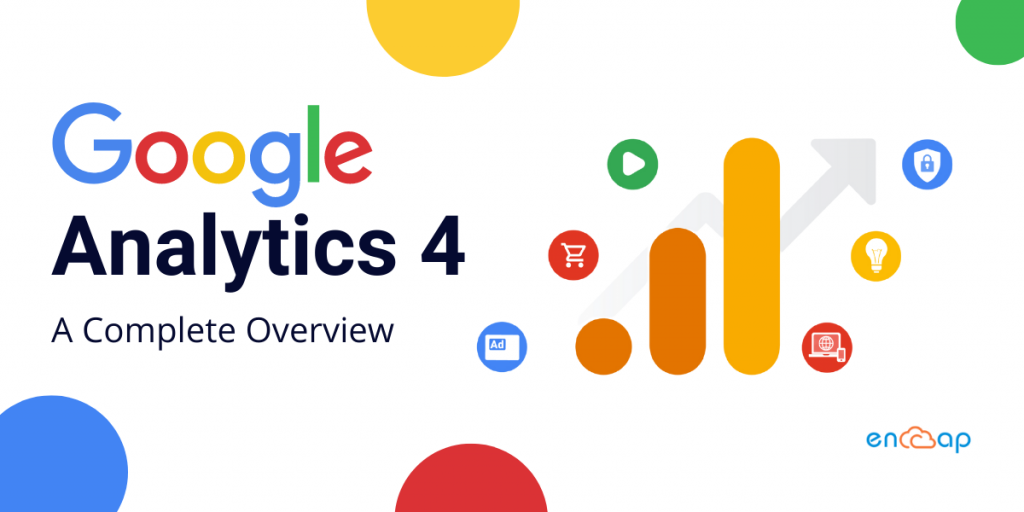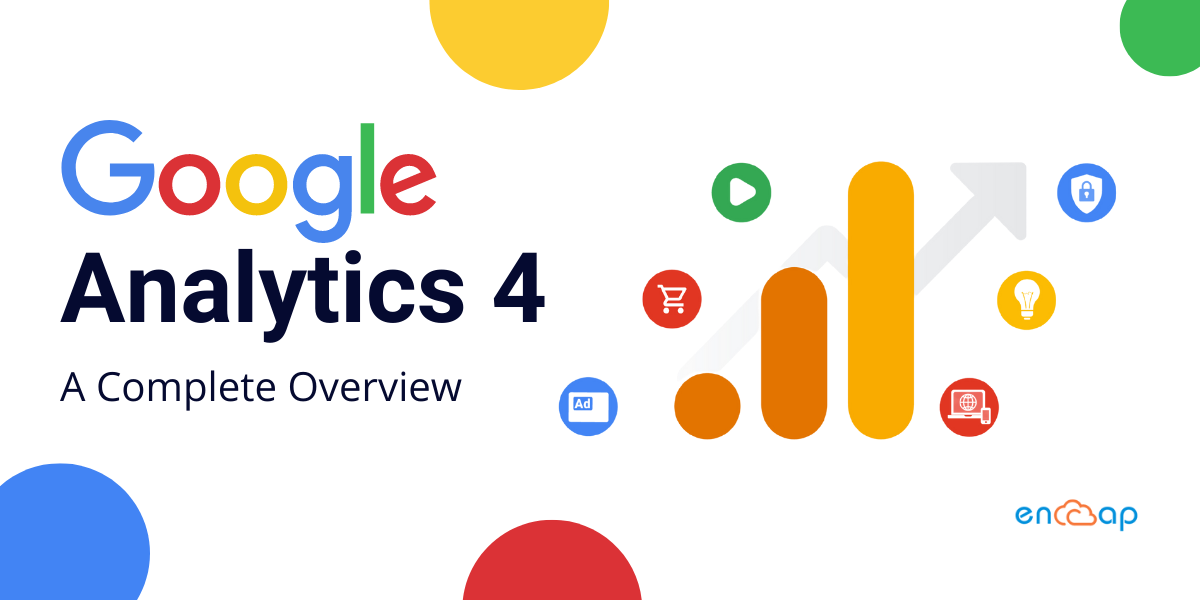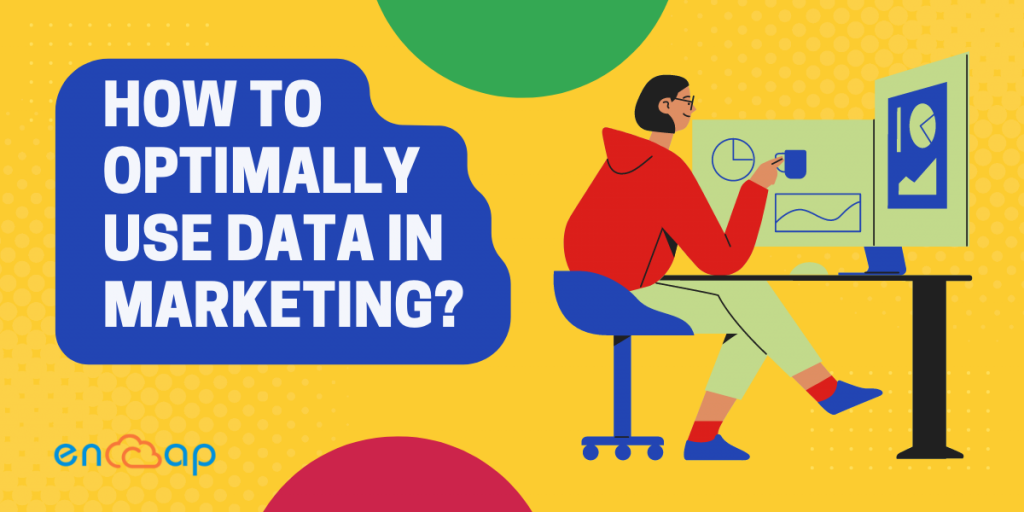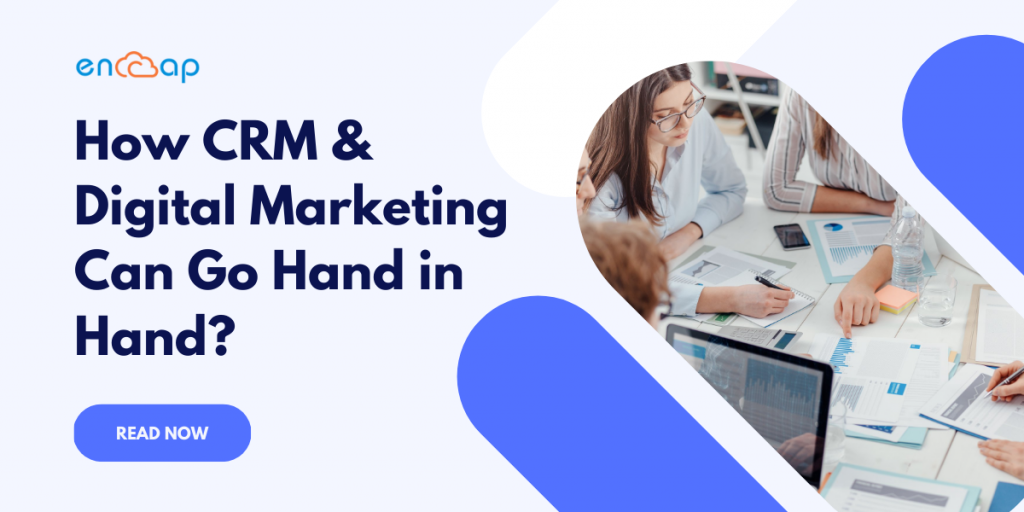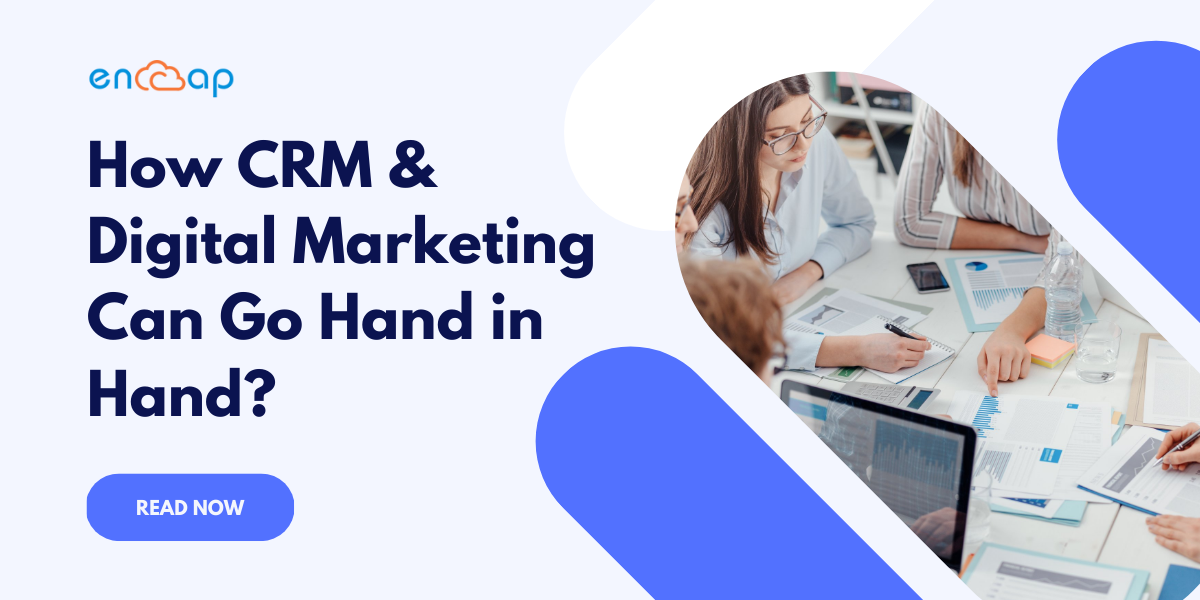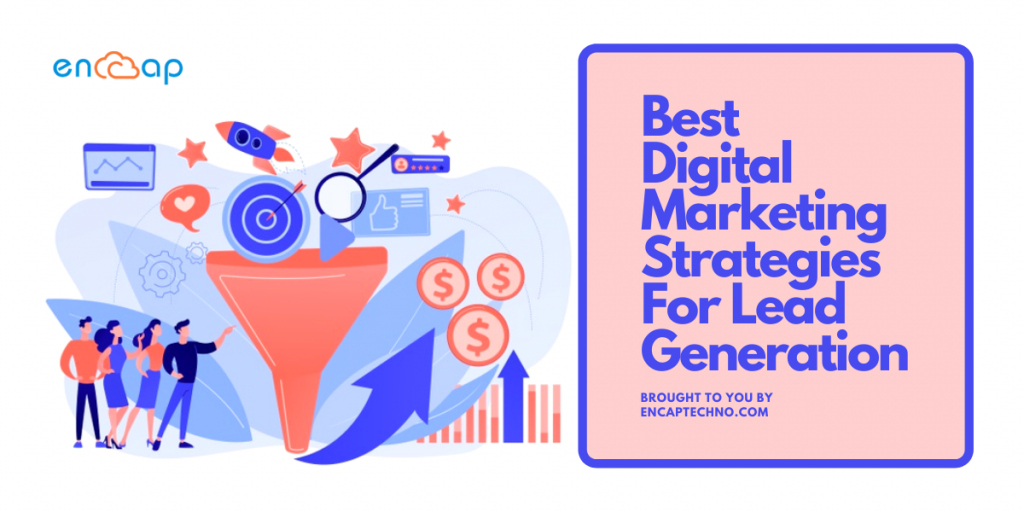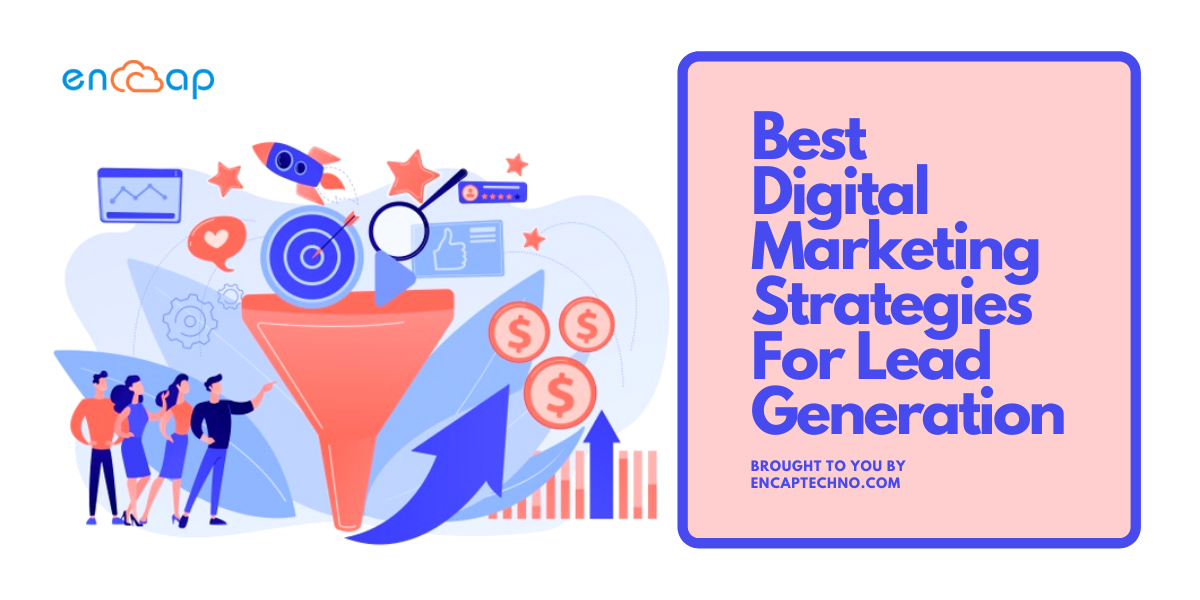SEO Audit – Why is it Important For Your Website? Discover Top 10 Reasons Now!
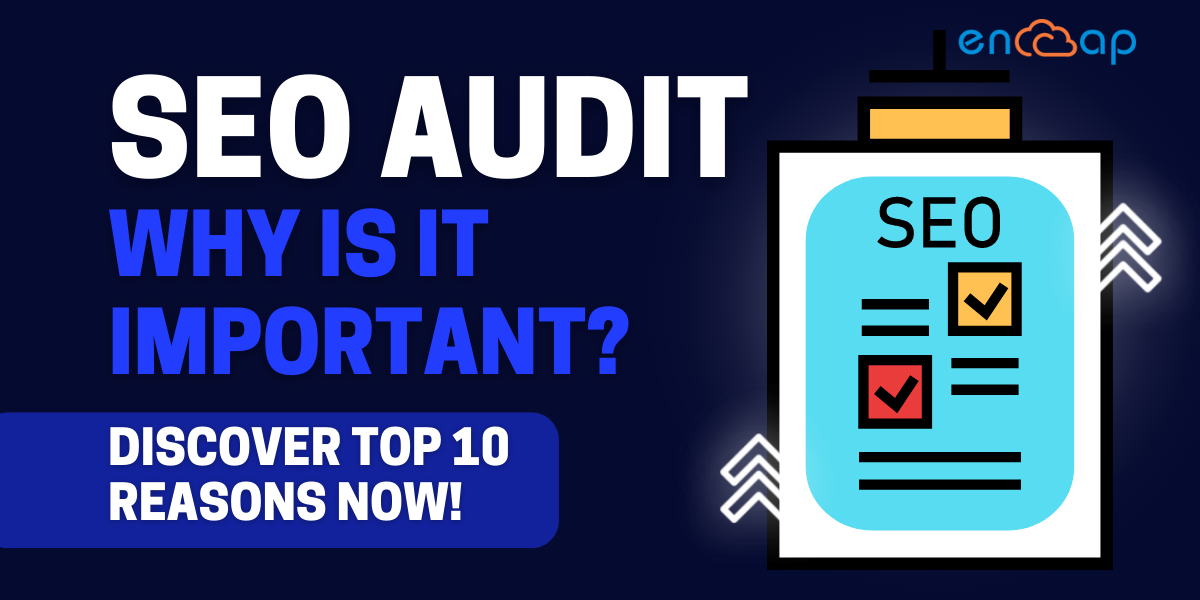
One of the essential foundations of e-commerce and digital marketing services is Search Engine Optimization or SEO. SEO is a broad science that includes everything from keyword research and image optimization to backlink building and content generation.
A well-executed Search Engine Optimization plan will increase the visibility of your website and products in search engines, resulting in increased organic traffic. Every company’s business card is its website, and when used correctly in marketing initiatives, it can boost your brand’s online presence. You probably already know how important a company’s website and search engine ranking are.
What is an SEO Audit?
An SEO audit of your website is an in-depth examination of the numerous aspects that influence your site’s organic search engine performance on Google or Bing. SEO audits aid in the detection of both SEO and website performance concerns.
For various reasons, including Google’s regular search algorithm adjustments and changes in user search behaviour, a website must be constantly analyzed and optimized.
- An SEO audit will tell you how to improve your website so that it appears in the top searches of your target customers.
- It will also aid you in creating your brand authority and increasing conversions.
- In its most basic form, an SEO audit aims to evaluate your website’s strengths, shortcomings, and potential for long-term success.
- An SEO audit is a vital health check that allows domain owners (you) to assess their website’s capacity to rank in the search engine results pages (SERPs) (search engine results pages).
- It entails examining your site through the eyes of Google and other search engines.
- Additionally, an SEO audit allows you to identify areas that need improvement and activities that are harmful to your website’s rating.
- The SEO audit aims to find as many foundational errors as possible that affect organic search performance.
With SEO Audit, you can analyze the following most effectively:-
- SEO concerns of a technical nature
- Issues with the structure of the website
- Issues with on-page SEO
- Offsite issues
- Problems with the user experience
- Gaps in content and opportunity
- Competitive market intelligence
An audit is a routine exercise that should be carried out regularly; it’s akin to a health check for your website.
Importance of SEO Audit
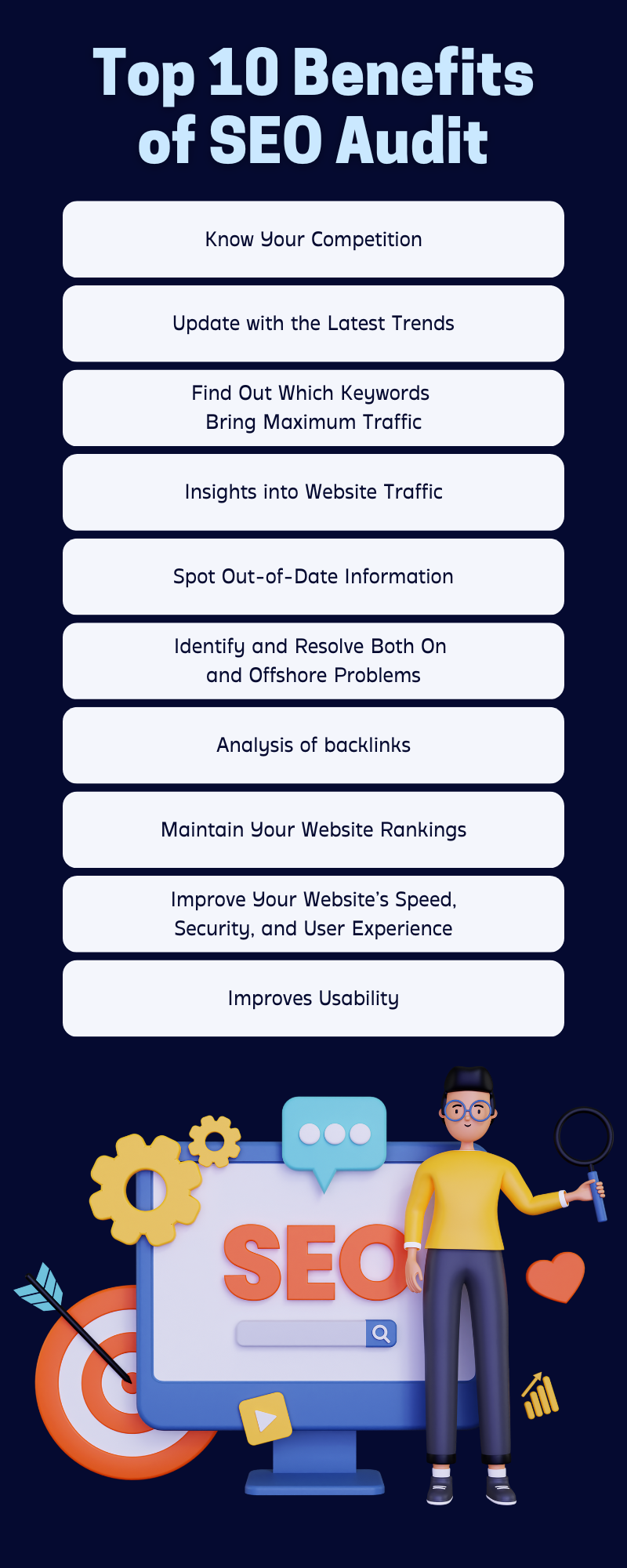
61% of marketers conclude their top inbound marketing priority is enhancing SEO and growing their organic presence.
Aside from that, performing an SEO audit will benefit you in the following ways.
1. Know Your Competition
SEO audits can provide data about your competitors’ websites, including their strengths and weaknesses. Using SEO auditing tools, you may also conduct a full SEO assessment of your competitor’s site. You’ll discover their keyword ranking, backlinks, SEO strategies, and their limitations and strengths. For example, you can check which of their articles is the most popular or receives the most backlinks, and if their tactic is successful, you can copy their approach and improve your SEO results. You can also want to concentrate on keywords that your competitors aren’t performing well for and strengthen your position for those instead. Knowing your competitors is critical for your business, significantly if ranking higher than you on search engines.
2. Update with the Latest Trends
SEO is a highly dynamic subject with hundreds of standards of best practices constantly changing. For example, there was a time when submitting news releases to a dozen different press release agencies might result in a thousand valuable backlinks to your website. The same strategy could now result in your website being sandboxed. What about exact match anchor links, keyword density recommendations, and other ranking factors?
How are you believed to maintain with all of these changes?
You don’t have to, though. An SEO audit using one of the SEO tools can aid in the identification of these outdated tactics.
3. Find Out Which Keywords Bring Maximum Traffic
We all want to rank organically for keywords with the most volume and relevance. Small and medium-sized firms’ websites, on the other hand, frequently rank higher for less competitive and long-tail keywords. Using keyword analysis as part of an audit, you may level the playing field by determining the most practical terms for your company and speciality. However, if those keywords aren’t bringing in any traffic, let alone the correct kind of traffic, it’s almost useless. If you’re ranking well for a keyword but getting little traffic from it, it’s possible that your buyer persona isn’t exploring that terminology or that it has a low search volume. An SEO audit will help you choose your target audience’s search phrases and variants.
You can then use this information to fill in the holes in your SEO strategy by developing and optimizing content.
4. Insights into Website Traffic
You may find out about your search volume, URL clicks, and impressions your website produces on search results by performing a comprehensive SEO website analysis and using tools like Google Analytics and Google Search Console. Increased clicks and impressions are always a good sign that your SEO strategy is working – make sure you regularly keep track of this data. In addition, SEO audits are a great approach to examining and benchmarking your website for accomplishments, problems, and the best ways to improve it. A complete analysis will give you valuable insights into what you should include in your SEO strategy and changes to improve the performance of your website and, most importantly, earn a return on investment.
5. Spot Out-of-Date Information
The existence of outdated content could be one of the reasons why your organic performance is deteriorating. It’s critical to supply relevant and new content for your website to be seen and ranked by search engines. You can increase your search engine rankings and user experience (UX) with the correct SEO site assessment. There is nothing to get rid of old content on your website, just like there isn’t one for any other white hat SEO method. So start excavating as soon as possible. Some of the content on your website may be obsolete. It’s critical to provide search engines with not just relevant but also new content, as well as a cause to return. If no one visits or returns to your website after six months, reassess the content or remove it.
6. Identify and Resolve Both On and Offshore Problems
An in-depth website audit will assist you in identifying any offsite or onsite issues driving traffic away from your site. For example, spam, hidden content, hostile URLs, and backlinks are some problems driving traffic away from your website. These difficulties might have an impact on your website’s total traffic, as well as your conversions. A professional website SEO audit can help you locate and even fix these issues before they get out of hand.
7. Analysis of backlinks
Every search engine considers backlinks to be the essential ranking indication. Because backlinks are regarded as endorsements, their quantity and authority can disproportionately impact your SERP ranking and visibility.
Backlinks from anchor text, guest posts, and press releases are no longer available. Search engine algorithms have improved, and websites that employ shady tactics to get backlinks will be penalized. SEO audits allow you to examine the source of not just your backlinks but also those of your successful competitors. This will show you how to replicate their link strategy. Audits will also reveal low-quality backlinks from link farms or spam directories, harming your website’s search engine rating. The general rule is that the more reliable connections you have to great content, the higher your site will rank. So why do most people have no idea what domains connect to their websites if backlinks are so important? It is critical to understand where you stand.
8. Maintain Your Website Rankings
Google’s algorithms are also updated regularly. These algorithm modifications are complicated to keep track of and may or may not impact your website’s ranking. This is where the SEO audit comes into action. SEO auditing tools use Google measurements to assist you in making data-driven and up-to-date recommendations on what adjustments to make to your website. In addition, search engines like Google, Yahoo, and Bing continually upgrade their algorithms to deliver better search results. You should be aware of these changes to make appropriate changes to your website’s content.
9. Improve Your Website’s Speed, Security, and User Experience
Search engines favour well-designed and well-maintained websites and those that are quick, secure, and provide a positive user experience. Consequently, they increase the visibility of such websites in their search engine result page or SERP rankings. However, clients frequently ask about website speed and efficiency in website construction. Fortunately, the time you create and design your website isn’t the only time you may influence its efficacy.
On the other hand, websites become heavier over time as thousands of lines of code are present at any given time, and security vulnerabilities will gradually accumulate unnoticed.
Regular SEO audits will assist organizations in identifying emerging problems on their website and implementing corrective steps.
10. Improves Usability
The usability of your website is critical to your e-commerce success. It is concerned with logic, easy navigation, and usable interfaces. In general, usability refers to how easy something is to use. Your sales and conversion rates will not increase no matter how much traffic you have if your usability is terrible. The process of creating a website is a mix of science and art. We want a functional, user-friendly, but also attractive and memorable website. However, aesthetics might have an impact on your website’s usability. An SEO tool will assist you in identifying some of your website’s navigational, functional, and structural flaws. Resolving these issues can immediately improve your website’s usability and improve your clients’ experience.
Conclusion
Regular SEO audits are highly beneficial to a company’s website. The search engine market evolves rapidly, and what works now may not work in six months. Therefore, an SEO audit can strategically improve your website’s performance, improve SEO, and increase conversions if done correctly. In addition, conducting an SEO audit on your own may reveal several areas that want attention. Because you are so familiar with your website, crucial components of it may go ignored. That’s why getting a third-party SEO audit can be beneficial — you can compare the results to assess your website’s overall quality accurately.
Sure, you could do the audit yourself and get the same results, but with an SEO audit professional at Encaptechno that cares as much about your site and its rankings as you do, you can be confident in your SEO strategy.
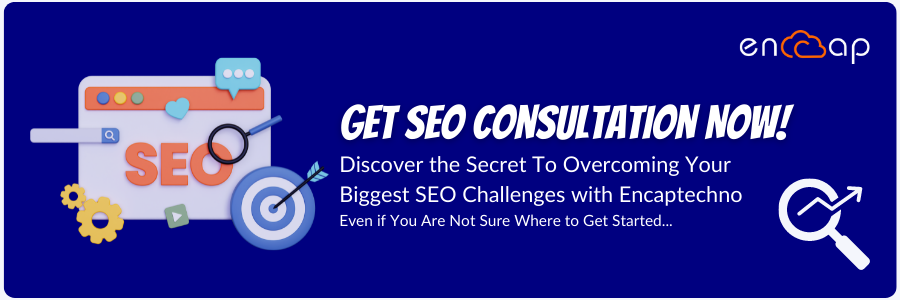
SEO Audit – Why is it Important For Your Website? Discover Top 10 Reasons Now! Read More »
Digital Marketing
